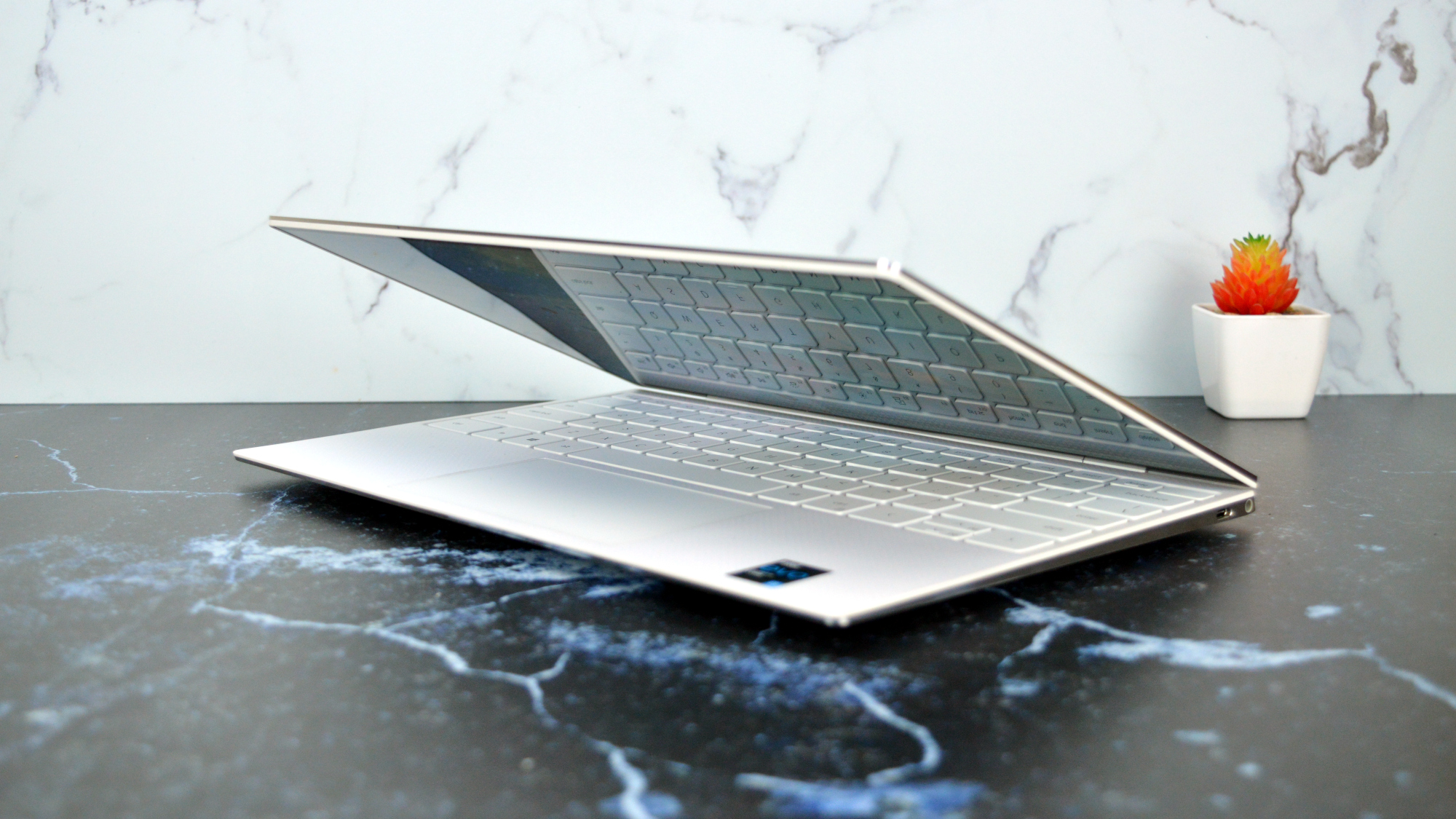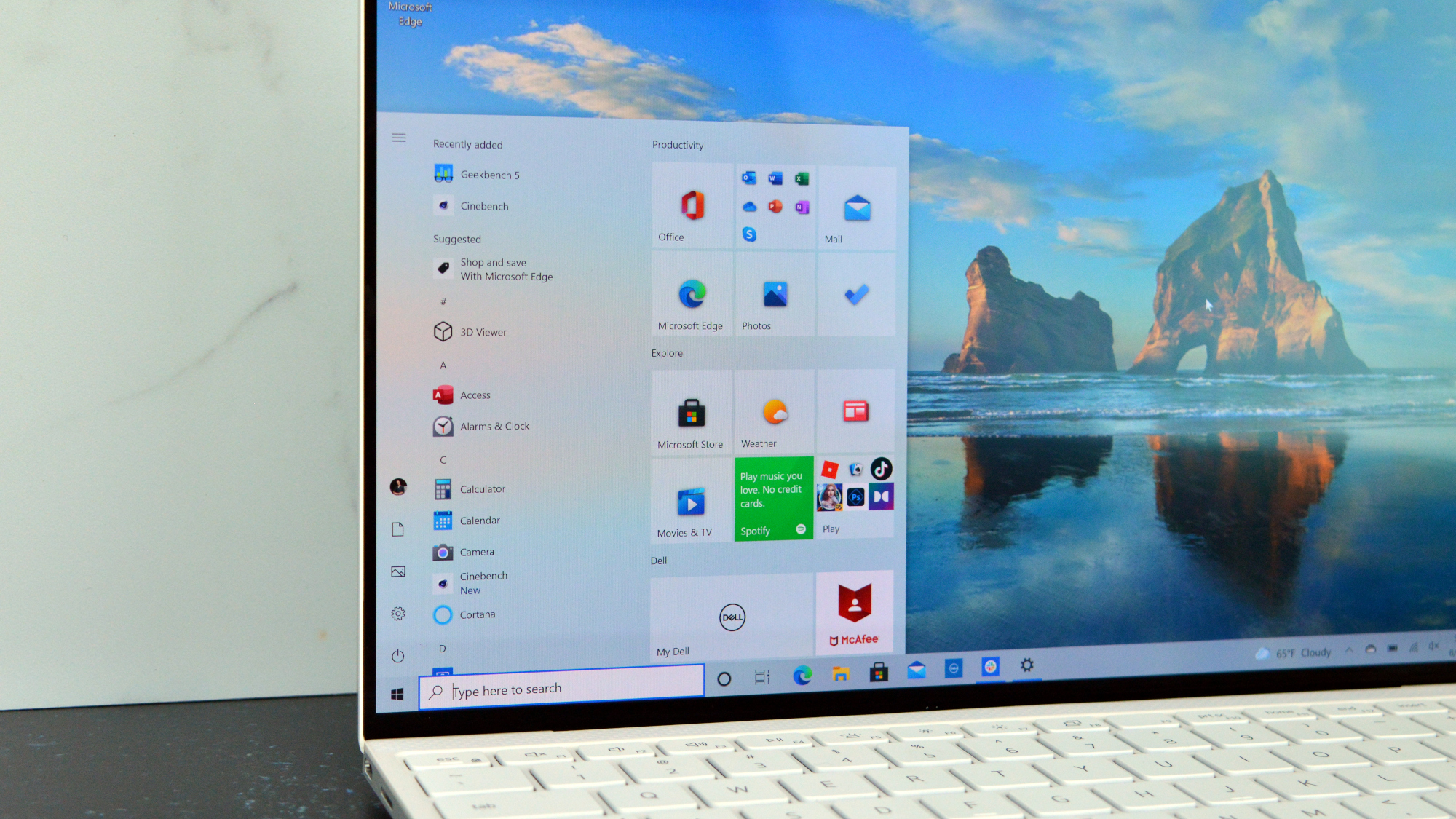The Dell XPS 13 has long been the go-to for those that want a premium Windows laptop experience. Dell has seriously innovated on design over the years, while still packing in excellent performance and premium features. That’s not changing any time soon — but what is changing is the increased competition, both from Windows laptop makers, and from Apple, which has arguably built a laptop that redefines the market in the new MacBook Air.
But Dell isn’t taking that competition lying down. The Dell XPS 13 Laptop (9310) gets an OLED display, an option for a 4K resolution, and more. In other words, this laptop is perfect for those that care about the numbers, but don’t want to sacrifice portability.

How does the Dell XPS 13 (9310) perform? I’ve been using it for a while now to find out.
Dell XPS 13 Laptop design
For years now, the Dell XPS 13 has offered a cutting-edge design, and the 9310 is truly stunning. Bezels are razer-thin without sacrificing things like webcam placement, the device is extremely thin, and it’s clearly built from premium materials.

The laptop is available in two color schemes — one with a platinum silver exterior and black interior, and one with a frost exterior and arctic white interior. We’re reviewing the latter, and it’s a great look. Having only tested the laptop for a limited time, it’s hard to tell if the white interior will get dirty over time. But, the carbon-fiber palm rest does seem to be relatively easy to clean. Dell says it has a stain-resistant coating, too, which should help prevent discoloration.
It’s important to highlight that there are a number of XPS designs. There’s a 2-in-1 version of the XPS 13, which has a 360-degree hinge, and there’s an XPS 15 and XPS 17, with larger displays. The model we’re reviewing is the non-2-in-1- XPS 13.
As we’ve come to expect from laptops in the XPS series, the XPS 13 Laptop offers a very modern design. You’ll get an edge-to-edge display, with a bezel that’s just big enough to house a webcam at the top. We’re glad Dell seems to have fully moved on from the bottom-edge webcams of a few years ago. We’ll go into the display more a little later.

The exterior is stunningly beautiful too. The device offers a matte aluminum exterior that reminds me of the silver on offer by the MacBook Air. At 14.8mm thin, it’s thinner than the MacBook Air, and it feels very lightweight and portable.
Around the edges, you’ll get two Thunderbolt 4 ports, a MicroSD card slot, and a headphone jack. That’s not a huge selection — and while I understand that Thunderbolt 4 ports are super versatile, I would have liked to see at least one or two more.
Dell XPS 13 Laptop keyboard and touchpad
As someone who types for a living, a solid keyboard is important. Thankfully, the keyboard on the Dell XPS 13 feels great. Keys offer a good amount of travel, and the spacing on them makes it easy to type with accuracy. The fact that the palm rest is comfortable and soft-feeling helps too.

Then there’s the touchpad, and it’s great. It’s a little larger than previous-generation touchpads, and that definitely helps. I found the touchpad to be accurate and comfortable, making it easy to scroll through long web-pages and zoom in when necessary.
Dell XPS 13 Laptop display
When you buy the Dell XPS 13 Laptop, one of the biggest decisions you’ll have to make is what kind of display you want. There are actually four options in total. The base model comes with an FHD+ LED display. The next model up gets you the same, with support for touch. Then, there’s the 3.5K touch OLED display, which is what we’re reviewing. Last but not least is a 4K LED display with touch support.
The OLED display on the model we’re reviewing is stunning. All of the display options come in a 16:10 aspect ratio, and while that’s a little unusual, I actually quite like it. It allows the XPS 13 to show more content than the 16:9 displays on older XPS 13 models, and that can help.
The resolution is easily high enough too. Some prefer true 4K, but in my opinion the 3.5K resolution here is close enough. Text looks incredibly sharp, while images are crisp and detailed. The OLED model doesn’t quite get as bright as the LED model, but it still gets bright enough for most use. And, the benefits of true black levels make the trade-off worth it.

Generally speaking, the display is able to deliver vibrant colors and deep black levels. That makes this a great laptop for watching movies, editing photos, playing games, and so on. It may not make the biggest difference for things like productivity, but the use of OLED tech may still help save on battery life too.
The touch sensitivity on the laptop is quite good. I really appreciate having touch support on a laptop, even if its not technically a 2-in-1, and even though I don’t use touch all that much.
Dell XPS 13 Laptop performance and battery
The Dell XPS 13 Laptop isn’t just a good-looking machine — it’s also a top-performing piece of hardware. Now, it definitely helps that we’re reviewing the model with the Intel Core i7-11685G7 chip, but even the base model, with its Core i3 chip, should be powerful enough for most users.

With the Intel Core i7 and 16GB of RAM, this laptop was easily able to handle all the day-to-day tasks that we could throw at it. In a normal work day, we had dozens of tabs open at a time, along with the GIMP image editing software and Slack, and rarely ran into anything more than the briefest of stutters.
The device performed well in benchmarks too. We achieved 1530 in GeekBench 5’s single-core score and 5605 in its multi-core score. On CineBench R23 CPU, we achieved 1446 in the single-core score, and 4406 in multi-core performance.
Of course, this probably isn’t the laptop to get for gamers. While the laptop can easily handle less demanding games, if you try to run anything more modern and graphics-intense, you’re going to run into issues.
Of course, all these high-tech features can suck up battery power relatively quickly. The result is that while the battery life on the Dell XPS 13 (9310) is fine, it’s not great. I was able to get the laptop through most of a normal eight-hour work day, but not the whole way. I suspect most will have similar mileage — and as a result, if you need to use your device for extended periods of time, it’s worth keeping a charger in your backpack.
Dell XPS 13 Laptop software and features

The Dell XPS 13 Laptop is one of Dell’s premium devices, and as a result there’s a lot less bloatware and advertising to deal with. It’s not completely devoid of those issues though. For example, I was served ads for Dropbox, along with prompts to enable things like OneDrive. The laptop comes with McAfee software as well, which is almost never fun. But, the Windows 10 experience on the XPS 13 definitely felt more scaled back than some other options.
The XPS 13 Laptop should support Windows 11 when it’s released in a few months, however we didn’t install the Windows 11 beta on this machine.
Conclusions
The Dell XPS 13 (9310) is a natural progression for Dell, and yet another hit. Seriously, this machine is beautiful. It’s not perfect — the battery life is pretty lackluster — but it gets pretty close.
Of course, the device is also pretty expensive. The base model of the laptop starts at $1,020, and the model we reviewed comes at a hefty $1,800. You don’t necessarily need to spend that much cash to get a premium laptop these days — but you certainly might want to.
The competition
Apple has been seriously threatening Windows manufacturers, and if you’re not tied to an operating system, the MacBook Air is absolutely the laptop to get. It still performs well, offers a much better battery life, and you’ll still get that premium design. If you do want to stick with Windows, however, the Dell XPS 13 is the best option in its price range.
Should I buy the Dell XPS 13 Laptop?
Yes. If you’re willing to spend the cash and want a Windows-powered machine, the Dell XPS 13 is the laptop to buy.









